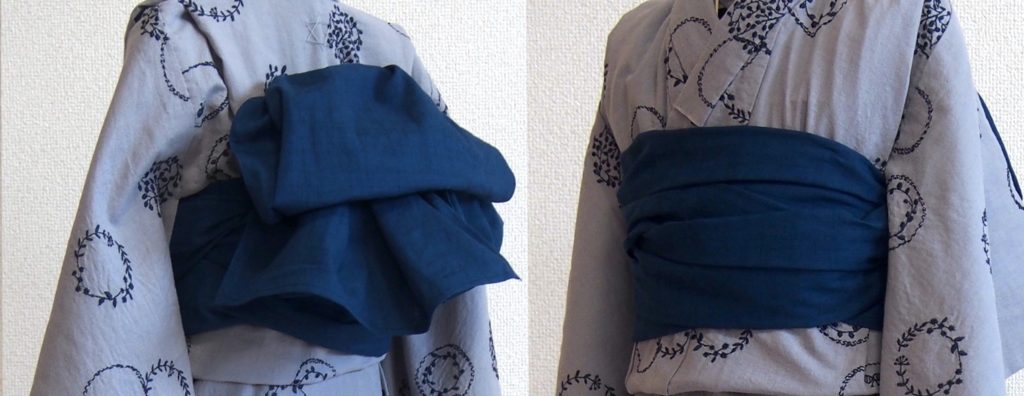
About YUKATA for Children
Please forgive me if my English sounds unnatural, because I used a web translation.
What is a yukata?

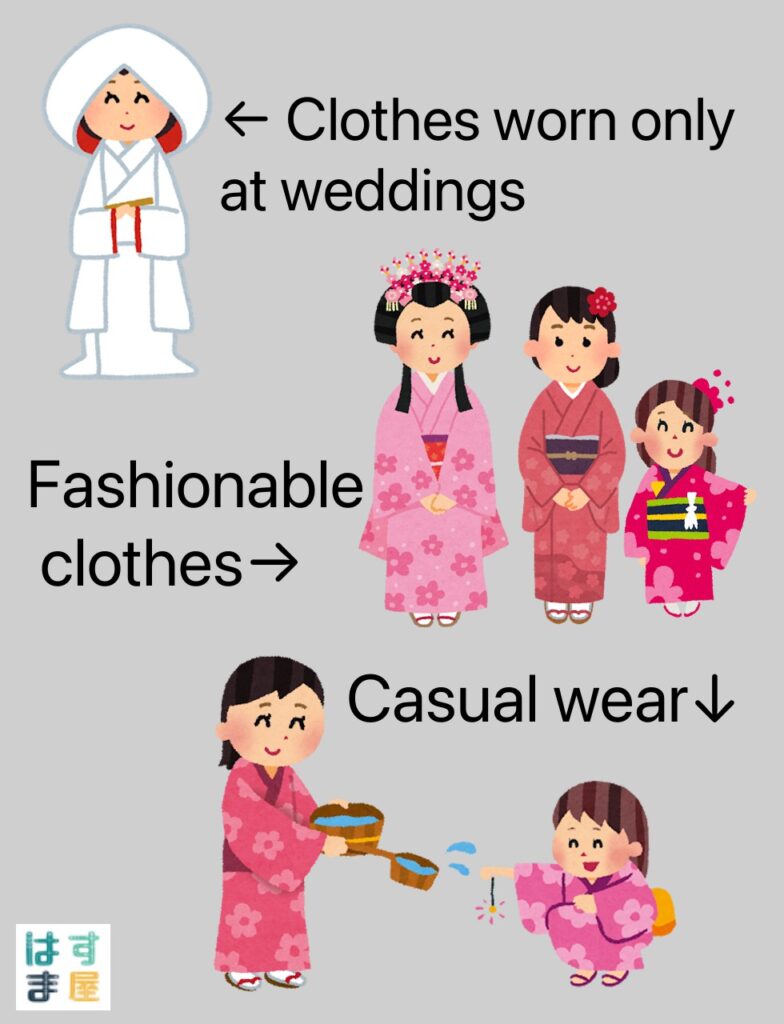
Yukata is casual wear.
Each piece of clothing has its own name. For example, wedding dresses, denim pants, etc.
Each kimono has its own name. For example, yukata, tomesode, etc.
“Yukata” is one of the names of kimono.
I will add a description of the Chinese characters.
着物(kimono)→ 着(put on), 物(thing)
和服(wafuku)→ 和(Japan),服(clothes)
洋服(youfuku)→ 洋(Overseas), 服(clothes)
浴衣(yukata)→ 浴(take a bath), 衣(clothes)
In old Japan, people did not bathe naked but wore yukata.
In modern times, it is worn as everyday summer wear.
…But the truth is that fewer and fewer Japanese are wearing traditional clothing. That’s sad.
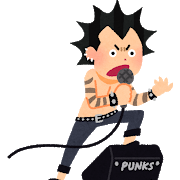
Just as there is a distinction between formal wear and everyday wear, there are rules for kimono as well.
But because it is everyday wear, you are free to enjoy it without being bound by rules!
though!!There is only one rule to follow.
To wear a kimono with the right side tucked under the left is the way when dressing the dead for burial. please be careful not to do that.
The picture shown below is the correct one!

How to stack neckband the alphabet“Y”is correct answer.
From the child’s own point of view,The first kimono touches the skin of the right half of the body.
(It will be on the lower side)
How to choose the size?
In the old days, Japanese made wishes when preparing clothes for their children.
“May you grow up big!”
For this reason, it was tailored to be large.

Just size was considered a bad omen “no more growth”.
In the past, many children in Japan died before reaching adulthood.
This is the reason why we dared to tailor it larger and adjusted the size every year.
Therefore, when purchasing, I am often asked, “What about sizing?” I am often asked.
How exactly do you choose?
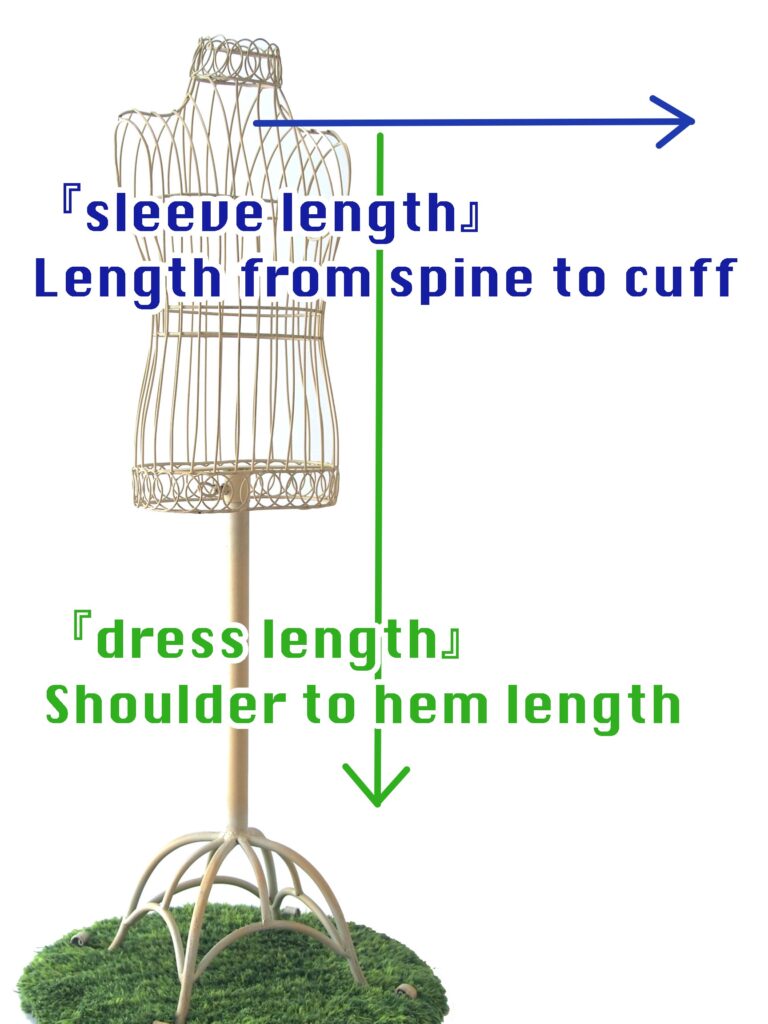
Match your child’s personality and preferences.
“Cute little girl running around energetically → Short length of clothes and sleeves”
“A neat and tidy girl who yearns for her big sister → Choose a longer length”
Thus, you are free to decide as you like!
How to adjust the size by yourself Sorry. Japanese only.
Our bases are available in M and S sizes.
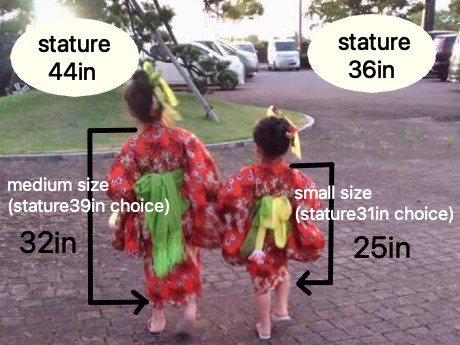
Small size
1-4 years old (Japanese size)
| stature | dress length / sleeve length |
|---|---|
| 80cm(31in) | 64cm(25in) / 34cm(13in) |
| 85cm(33in) | 67cm(26in) / 36cm(14in) |
| 90cm(35in) | 71cm(28in) / 38cm(15in) |
| 95cm(37in) | 76cm(30in) / 40cm(16in) |
| 100cm(39in) | 82cm(32in) / 40cm(16in) |
Medium size
4-11 years old (Japanese size)
| stature | dress length / sleeve length |
|---|---|
| 100cm(39in) | 82cm(32in) / 43cm(17in) |
| 110cm(43in) | 87cm(34in) / 45cm(18in) |
| 115cm(45in) | 91cm(36in) / 48cm(19in) |
| 120cm(47in) | 96cm(38in) / 49cm(19in) |
| 125cm(49in) | 100cm(39in) / 49cm(19in) |
In Japan, we usually use centimeters as a unit of length.
However, since the history of kimono is very old, we use the whale scale.
I have recalculated from the whale scale to centimeters and then to inches
Please allow for a slight error.
How to tie an obi
Only in Japanese, but you can check it out on the pics!
I’ll update again!

